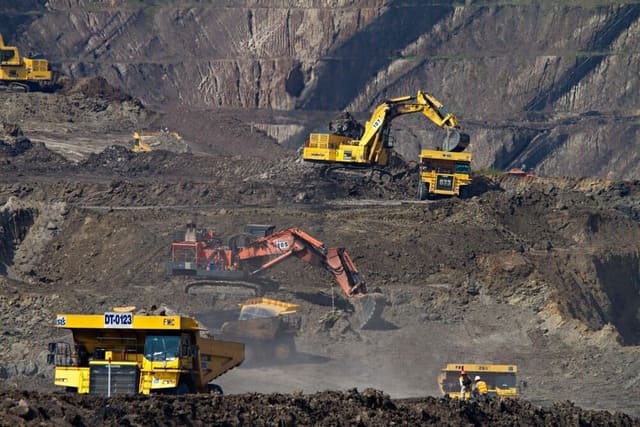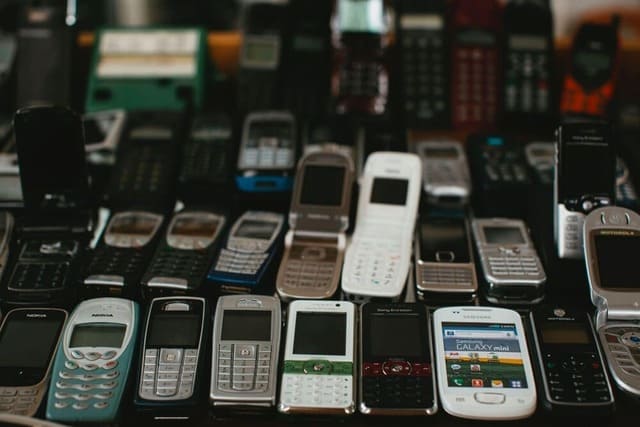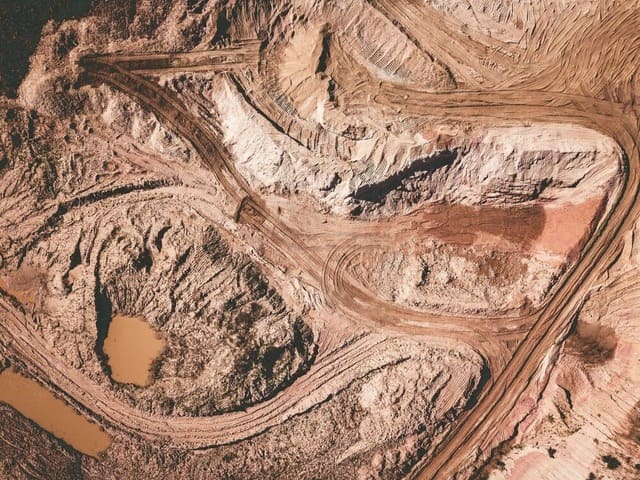Breaking Free from Rare Resources Dependency: A Major Challenge for the Digital Sector
Team WeeeDoIT
- March 3, 2022
On January 10, 2022, the Varin report was released to secure the supply of raw materials for the industry. In an increasingly tense context regarding these resources, this report aims to strengthen the country’s resilience to dependence.
Rare ressources are now predominantly used to manufacture our electrical and electronic products and play a significant role in the ecological transition. Whether in our phones, computers, refrigerators, or even in wind turbine magnets or electric vehicle batteries, rare materials are used absolutely everywhere.
To the extent that their global demand has increased by 6% per year, as highlighted in an article by Consoglobe.
Between the frantic release of new digital devices and planned or psychological obsolescence, the renewal of digital tools is becoming more frequent. The waste that results and the extraction of rare materials also contribute to this.
Why is it urgent to break free from rare materials dependence and how can it be done? WeeeDoIT provides some avenues for consideration.
What are rare metals?
Definition Rare metals do not wear their name very well. They are available in sparse quantities in the earth’s crust, some even in equal measure to common metals like copper.
They possess numerous electromagnetic properties, hence their massive and growing use in the manufacturing of new technologies.
Today, there are 17 rare materials:
- scandium for lightweight alloys;
- yttrium for laser fabrication, its high-temperature superconducting properties…;
- lanthanum for nickel-metal hydride batteries;
- cerium, which is an oxidizing chemical agent;
- praseodymium used to create permanent magnets;
- neodymium for permanent magnets (wind turbines, small hydroelectric power plants, hybrid cars…);
- promethium: luminous paints, nuclear batteries…;
- samarium for permanent magnets, X-ray lasers…;
- europium for compact fluorescent lamps, X-rays, lasers…;
- gadolinium for its neutron capture capability used in nuclear reactors…;
- terbium for X-rays, TVs, lasers…;
- dysprosium for permanent magnets, hard drives…;
- holmium for infrared surgical lasers, pink dye in glasses…;
- erbium used in the manufacture of infrared lasers (dentistry)…;
- thulium which creates blue phosphors for X-ray enhancer screens and is a high-temperature superconductor;
- ytterbium for atomic clocks and stainless steel, portable radiography;
- lutetium for detectors in positron emission tomography.
Behind the Scenes: Repercussions of Rare Metals Extraction
Pollution
Whether during extraction or the separation of different materials, all of this releases numerous toxic products into the surroundings:
- heavy metals;
- bases and solvents;
- acidic effluents;
- radioactive waste.
Chemicals are massively used in some separation techniques because the ores sold must contain a minimum of 99% of the sought-after metal. To achieve this purity, the found lands are washed with highly acidic chemicals.
These open-pit mines, in addition to being devastating for biodiversity, are also harmful to the health of people who work and live nearby.
They breathe in dust filled with heavy metals that settle on the ground and are highly volatile.
The extraction of certain rare metals can also be accompanied by nuclear radiation. This is highlighted by the magazine Géo when it points out that villages near the Baotou mine in Mongolia are 30 times more radioactive than normal. To give an idea, Chernobyl is 14 times higher.
This pollution is also found downstream in electronic waste dumps, especially in low-income countries where resources for recycling are much lower.
When components are not properly recycled, they seep into the water and surrounding lands of these electronic dumps.
Resource Consumption
The extraction and processing of rare metals require numerous resources. Moreover, the countries that handle them often use coal as an energy resource, which has a strong impact on the carbon footprint of the final product.
This excessive consumption also concerns water in regions that are already beginning to experience water stress issues.
Australia, which is in the top 5 global producers for lithium, nickel, copper, cobalt, and aluminum, is proof of this. Between increasingly severe droughts, devastating wildfires, agriculture, and various water needs, the exploitation of rare materials adds additional strain on this already scarce resource.
Lack of Electronic Waste Recycling
In 2019, according to a study published on GlobalWaste, only 17.4% of electrical and electronic equipment waste (WEEE) worldwide was collected and recycled. This is low considering the 53.6 million tons generated.
2.5 million. That’s the number of additional tons of electronic waste generated each year. From 53.6 million in 2019 to a forecast of 74.7 million tons by 2030, this waste, which comes from all our digital and electronic devices, is experiencing rapid growth.
And recycling figures were not much better in 2019:
- 8% of WEEE is thrown into household waste bins in high-income countries;
- 7 to 20% are exported to low-income countries;
- only 17.4% of waste was formally collected and recycled.
In Europe, this recycling rate is higher as it covers about 42.5% of the total waste rejected in 2019.
But recycling is not always the ultimate solution, especially for such small components in some devices. Difficulty in separating and extracting them, these wastes have a financial and energy cost and do not have a 100% effective process.
Human Exploitation
Whether for extraction or in the accumulation of waste at the end of their life, humans involved in these areas are severely affected in terms of their health.
Between various toxic emissions or unsanitary working conditions, it is difficult to regulate everything. And this also concerns children who very often work in electronic waste dumps to collect rare metals and minerals that they can sell for a pittance.
The WHO estimates that there are 73 million children worldwide engaged in hazardous work related to the informal waste recycling sector.
Monopoly of Certain Countries
The Varin report published in January 2022 aims to break free from the monopoly dependence of certain countries. China, for example, holds 37% of the world’s rare mineral resources and exports 95% of its extractions worldwide. In 2016, this represented 105,000 tons.
Faced with environmental, health, and human consequences, it is one of the only countries that has continued to extract without very strict regulation.
In addition to creating dependence and strong tensions as demand explodes, this leads to geopolitical conflicts. Congo with coltan is a good example.
2 Alternatives to Break Free from Dependence
It is well understood that pollution and the impact of IT equipment mainly stem from its manufacturing. According to the ADEME, buying a refurbished phone could reduce its annual environmental impact by 51% to 91% depending on the indicators compared to using a new smartphone. This is 82 kg of raw materials saved and 25 kg of CO2 equivalent per year of use.
But concretely, how can we reduce digital dependence on rare materials and reduce related emissions?
In addition to scientific research in chemistry that addresses the problem to develop substitute materials, there are 2 viable alternatives.
Urban Mining
Urban mining involves extracting the raw materials necessary for the manufacture of high-tech devices and others from digital landfills.
Increasingly popular, urban mining has many advantages:
- savings in resources that are not used during extraction;
- recycling of components and therefore of still usable raw materials;
- reduction of waste that is buried, incinerated, or piled up in illegal dumps.
GlobalWaste estimates the total value of all components and raw materials found in these above-ground mines at nearly 48 billion euros. Gold, copper, silver, platinum; the materials that can be recovered and reused are numerous. This also helps to reduce rebound effects related to the explosion of the digital industry.
Refurbishment and Reuse
Refurbishment and reuse are part of the virtuous approach of the circular economy, based on the entire life cycle of a product.
In addition to reducing waste, this extends the life of devices and thus reduces their carbon footprint and the resources used for extraction. Because what really pollutes is not the use we make of it but rather the manufacturing and end-of-life phases.
Reusing perfectly functional components for repair or the manufacture of new devices valorizes what would have otherwise ended up as waste. The ADEME goes so far as to say that on the market scale, in 2020, by purchasing refurbished phones, we could save approximately 229,000 tons of raw materials and 70,000 tons of CO2 equivalent.
Considering that recycling is still very partial and that many WEEE do not go through this process, reuse and refurbishment remain the best solutions to drastically reduce the footprint of IT equipment.
This allows for:
- slowing down the pace of production and renewal of digital tools;
- using resources to create new economic opportunities;
- refurbishing locally and creating new jobs;
- establishing a circular economy.
Of course, once a refurbished IT device is purchased, the goal is to extend its life as much as possible to reduce its impact and limit the weight of waste management.
—
Faced with the enormous ecological, human, and health challenge posed by the extraction of rare materials for the manufacture of various devices, it is urgent to act.
Through the reuse of spare parts, urban mining, or refurbishment, pollution related to extraction and processing is reduced, as are waste and carbon footprint.
Do you want to save money and the environment with refurbished devices? Send us a message to discuss, we will be happy to respond.
Team WeeeDoIT & Emma




